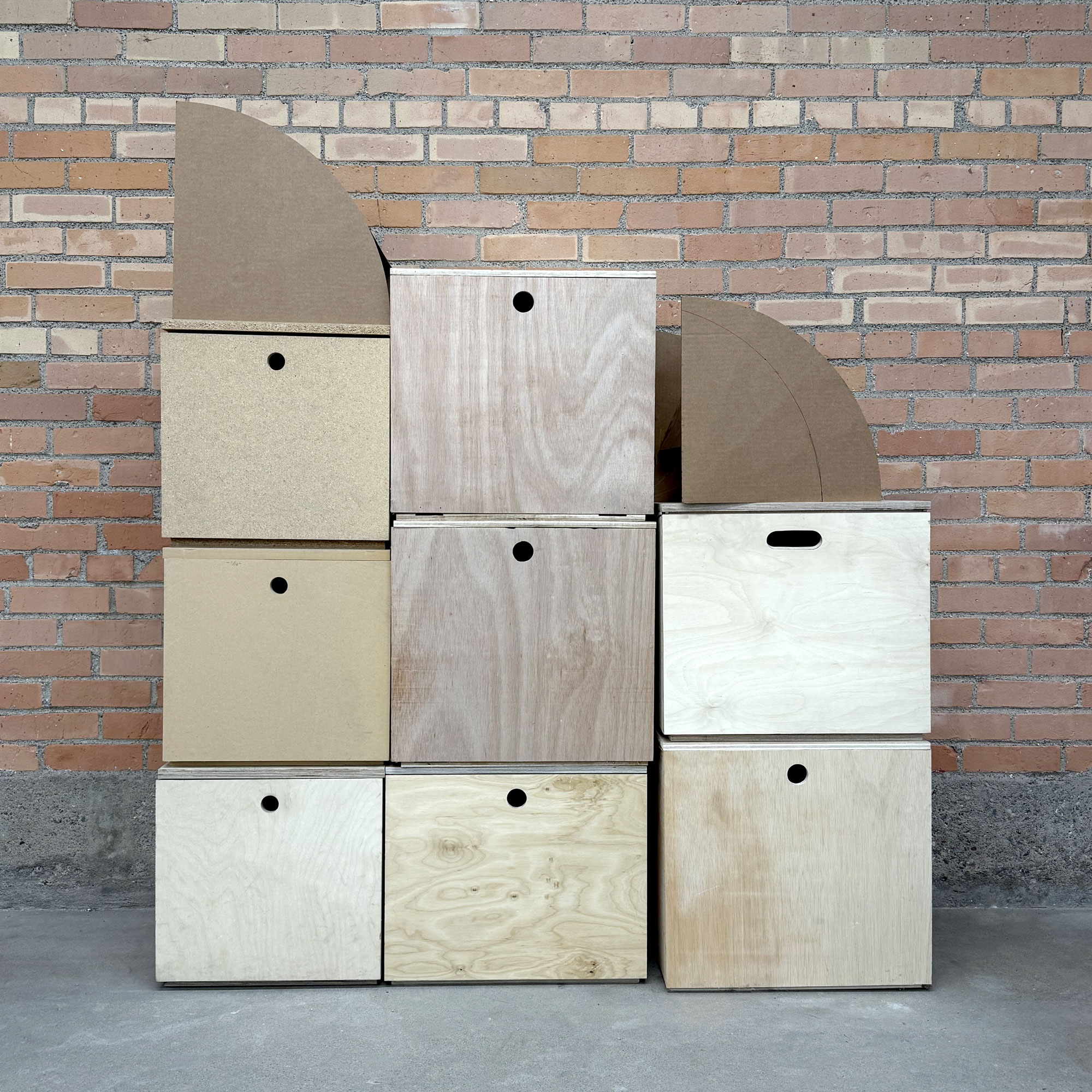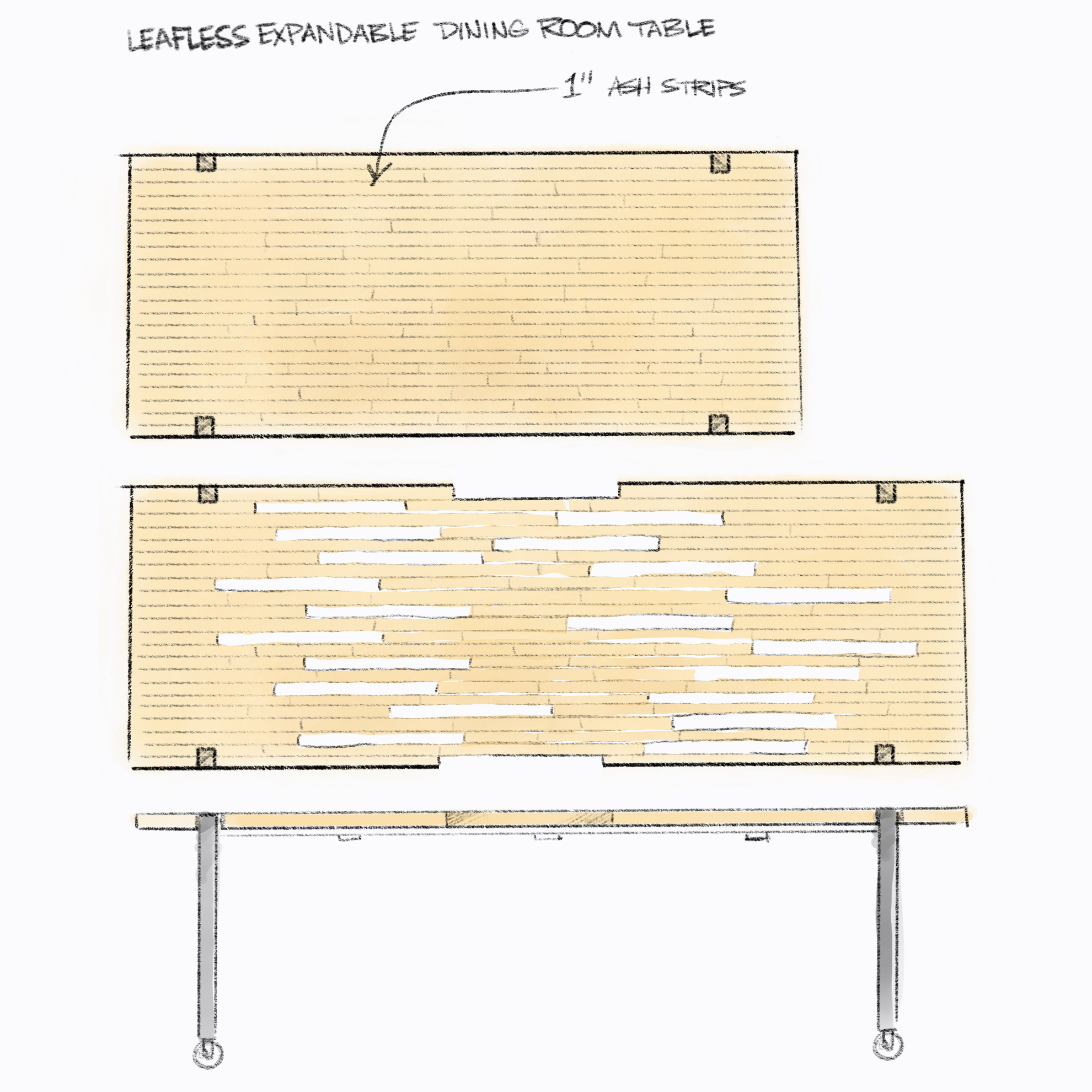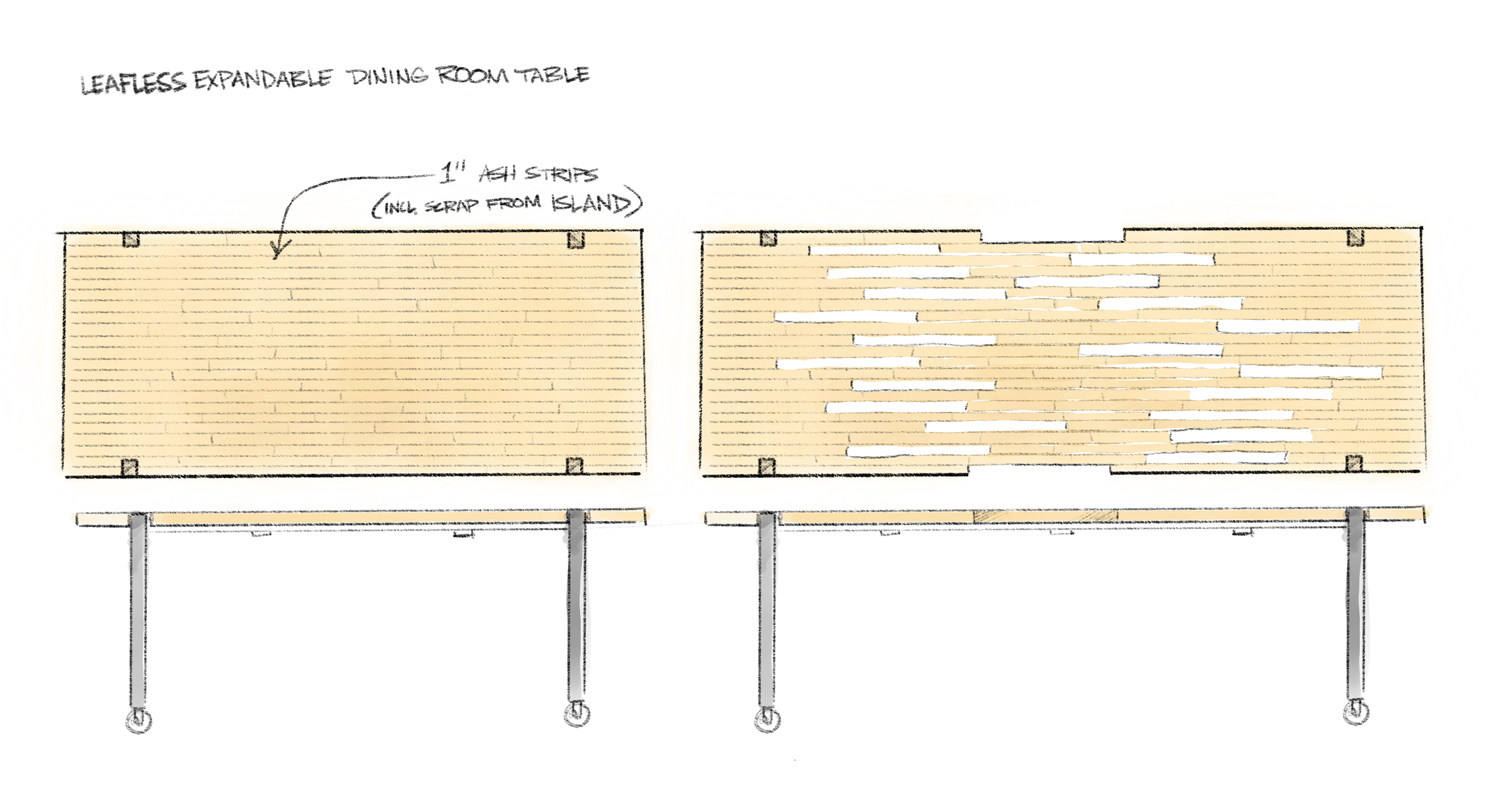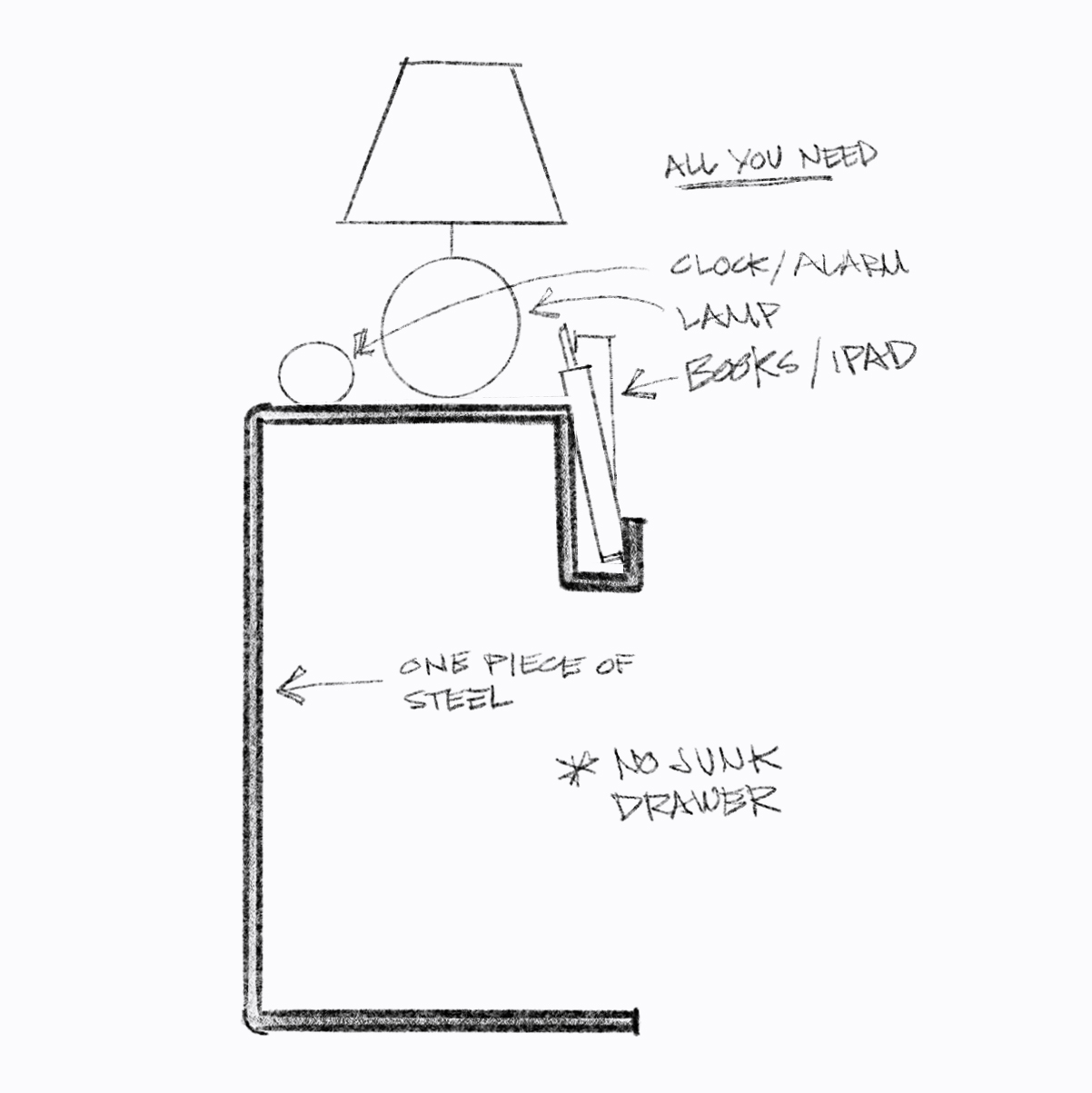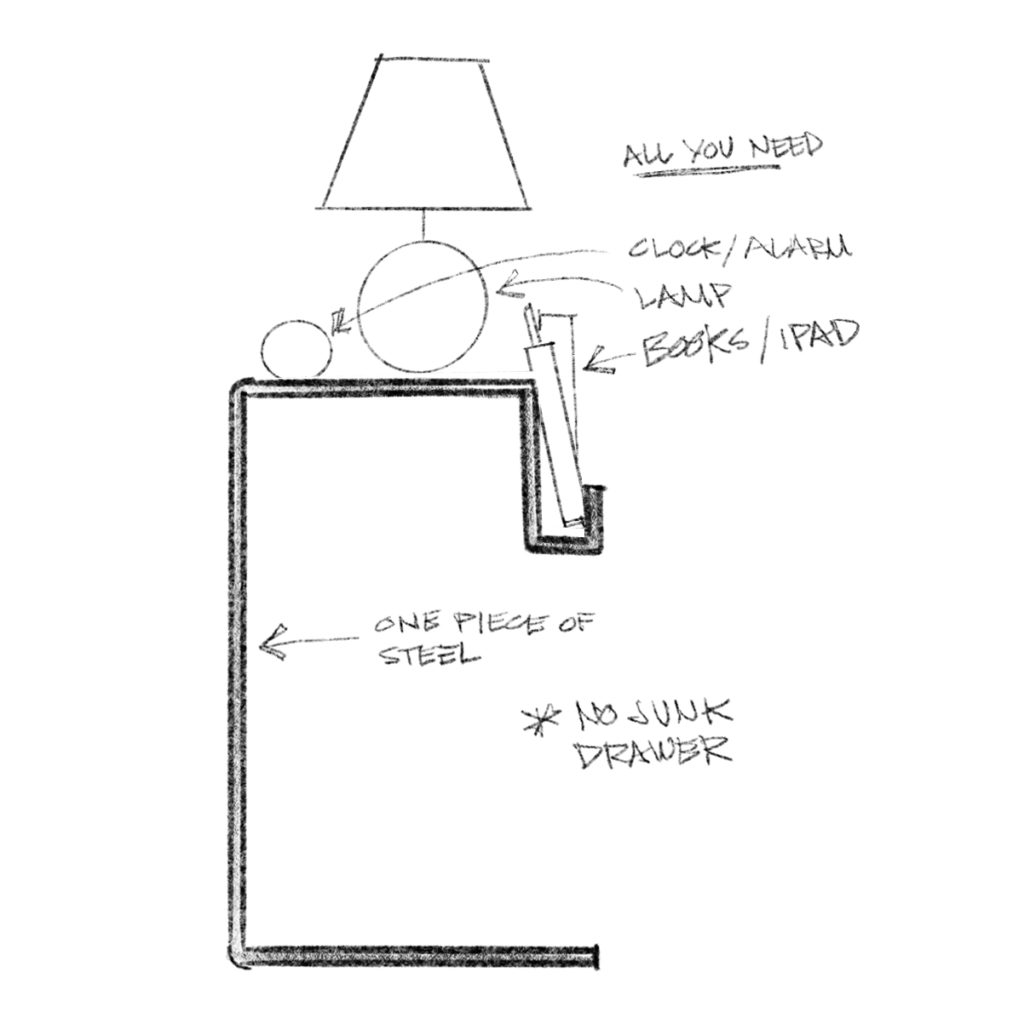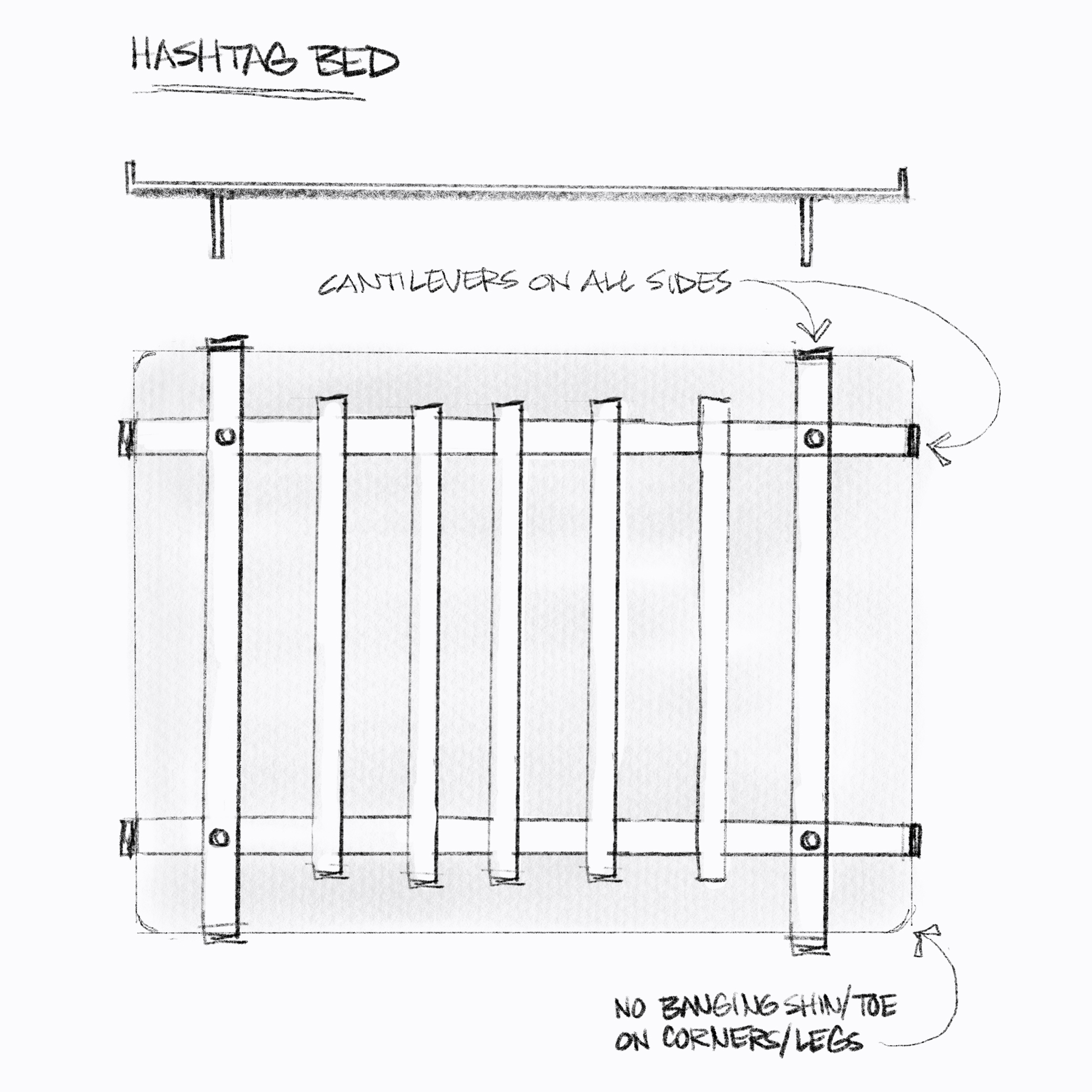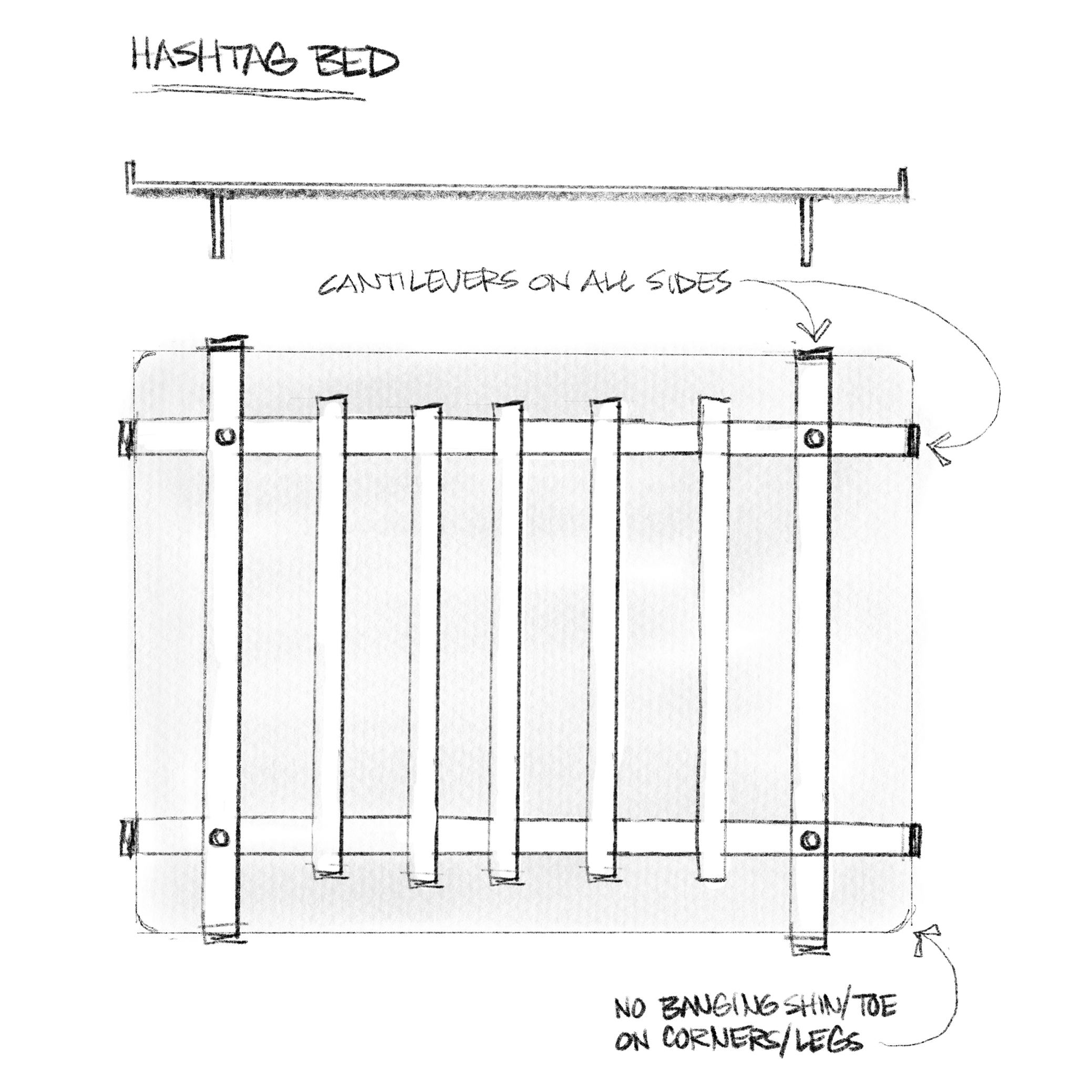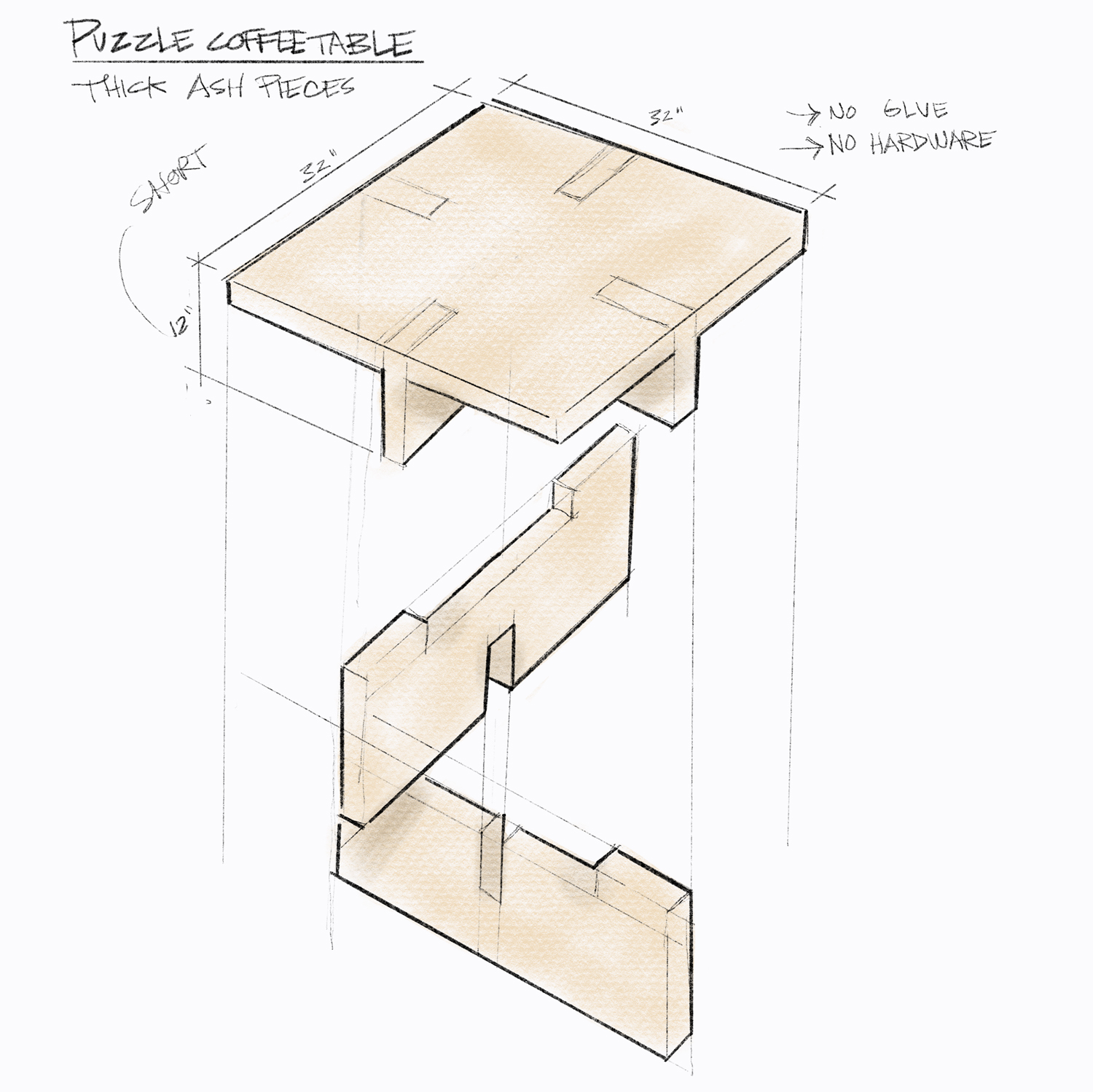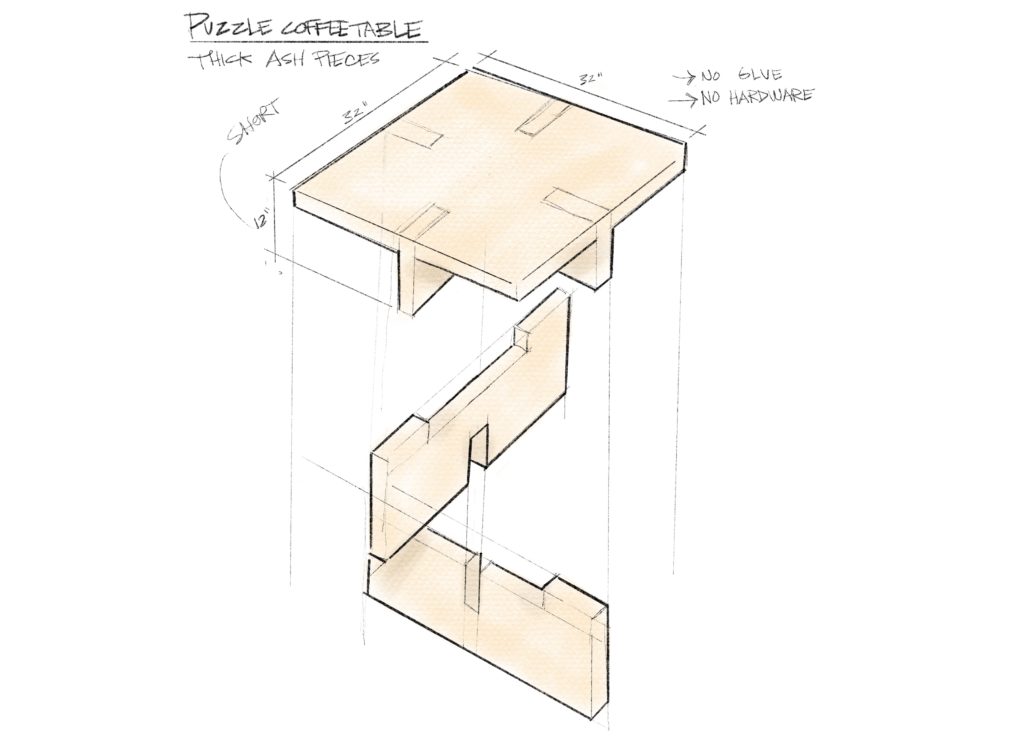Making Quadrant
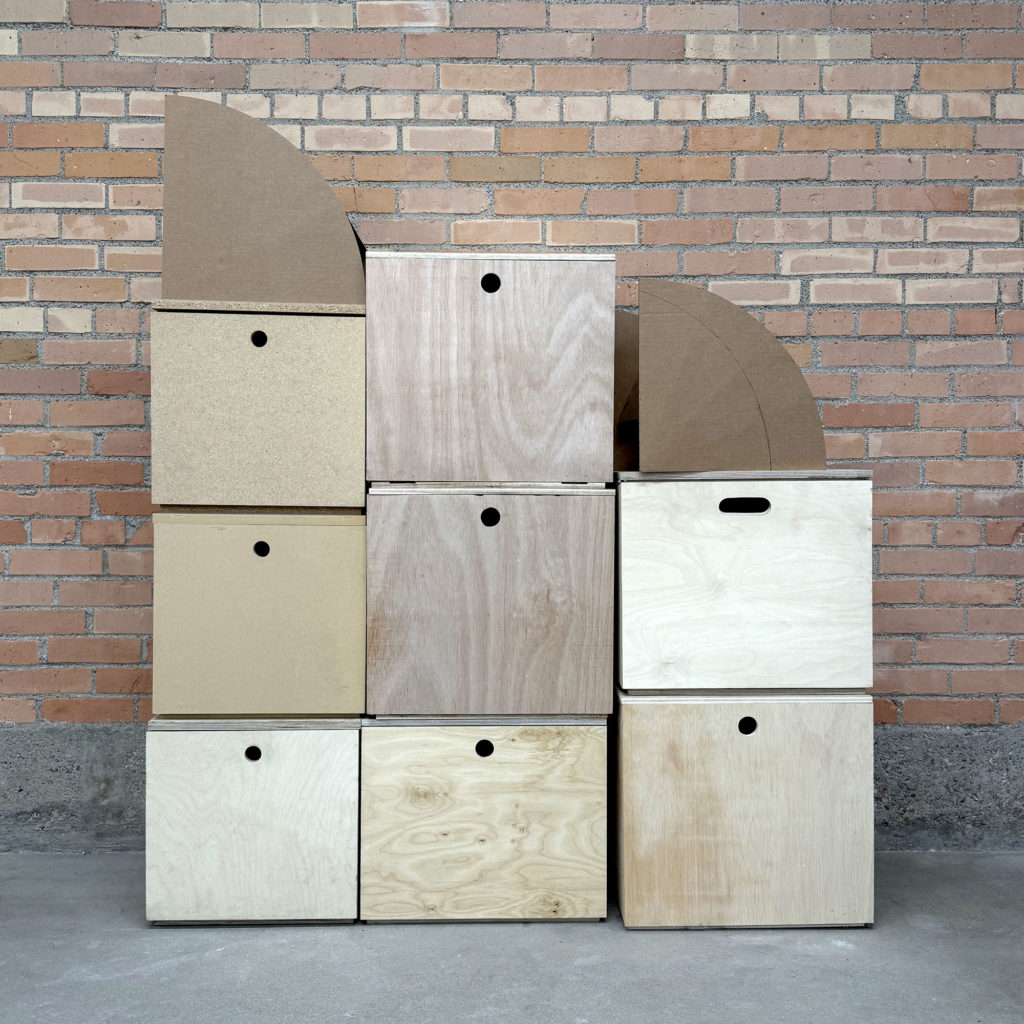 It seems like every home has a pile of shoes somewhere. We had designed custom, built-in solutions that we thought solved the problem nicely, but we couldn’t find something that could go in every home. We had a very simple list of requirements: It had to use space efficiently, it had to be modular for different size families, and it had to have a place to sit while you put your shoes on.
It seems like every home has a pile of shoes somewhere. We had designed custom, built-in solutions that we thought solved the problem nicely, but we couldn’t find something that could go in every home. We had a very simple list of requirements: It had to use space efficiently, it had to be modular for different size families, and it had to have a place to sit while you put your shoes on.
Simple Geometry
We sketched out a lot of bad ideas. It kept getting too complicated, so we finally stripped it down to the simplest form: a box. We always appreciated the efficiency of the wedge shape for shoe storage, so we paired that with our love of simple geometry. We imagined something like an Ellsworth Kelley painting, where two sides of an elegant curve slide past each other as it opens.
 Skateboards
Skateboards
One of the first problems we encountered was how to support the top when the box is open. The top was supposed to be a bench, but the walls that would normally support it had to be able to rotate freely. We tried placing a column in the middle of the box and made a slot in the dividers. It didn’t work at all. Shoes got stuck…and it looked stupid. The solution was inspired by skateboard wheels (maybe because the curve reminded us of a ramp). We wound up using ball bearings that rode along the curve and transferred the load from the lid to the ground.
We made tons of prototypes testing different parts of the design and construction, and also testing the size. We started with a simple circular hole for the handle, but it didn't feel right. We made it a pill shape which fit the hand better, but, when the box is open, the hole doesn’t work very well because it’s flat against the floor. We decided to make the hole at an angle so there is a lip on the top to open it, and a lip on the bottom to close it.
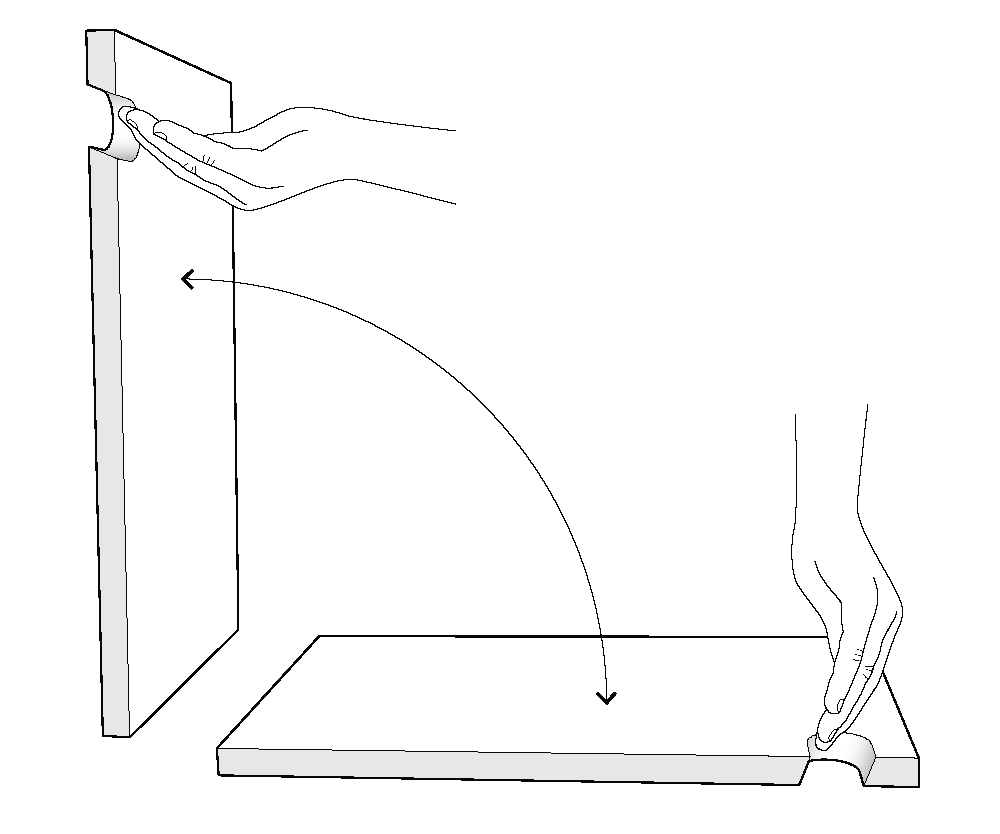
We have been using Quadrant for several months now and love it. We hope that you will too. Check out the final product here.
Making Stretch
Dining tables are always tricky. We had a few ideas that would work in a client’s house that was nearing completion. Then the client mentioned one requirement: it had to extend for a larger group. This brought to mind heavy table leaves sitting in a room somewhere, sad because they only get used on one day a year.
Fingers
We wondered if a table could extend like interlocking fingers pulling apart. We thought it was a good idea, and did a few sketches of how we thought it would work. We worried about the mechanics, but we also worried that it wouldn’t look seamless when it was closed. We thought there would be some clues to the fact that it extended, and that it ultimately wouldn’t look 100% right in either state.
The Squeal
We were discussing other projects when Zach, the craftsman who was tasked with building the prototype, looked over and asked if we noticed the table. The fact that it extended was so well hidden that we didn’t even notice it. It was completely seamless, and the gaps completely disappeared when closed. Despite knowing what it was supposed to do, there was an audible squeal when we see the two sides pull apart for the first time.
Making Crane
Frank Lloyd Wright coined the term “carport” when exploring alternatives to the garage. Wright believed that garages promote clutter (and he was certainly correct when it comes to my garage). Another thing that promotes clutter? Drawers in nightstands! Mine was full of pens, ticket stubs, partially filled notebooks, less partially filled gift cards, and miscellaneous cables from obsolete gadgets.
Back to Basics
We wanted to get rid of any preconceived ideas and start with what is absolutely necessary in a nightstand.
We broke it down and thought of the following:
- A lamp for reading before bed (and in case inspiration for a nightstand comes in the middle of the night).
- A small area for an alarm clock.
- A place to keep reading material.
We sketched a nightstand that had a bit of flat space for a lamp and clock, and a little shelf for books and/or an iPad for reading. We thought one thick piece of steel could be bent to serve both purposes.
Playing Favorites
We designed a few for a single-family project we were working on. When a friend went through the house, he said that the nightstands were one of his favorite parts and asked where we bought them. We didn’t have a good answer, so we made a place.
Designing The Corner-Free Hashtag Bed
Why does it hurt so badly when you bang your shin or toe on the corner of the bed?! Maybe it’s a small problem, but, after banging your shin once, you will probably agree that it is one worth solving. We looked at the soft mattress and explored ways to eliminate the hard, scary bed frame around it.
Cantilevers
Like all architects, we have a bit of a cantilever fetish and decided to cantilever all sides of the frame. Cantilevering all sides makes a hashtag, and a hashtag makes a bed frame with no painful corners.
Subtle Curves
We liked the idea of a minimal bed frame that mostly disappears, but we wanted one nice, subtle detail that is sometimes visible. The subtle curve of the “hands” keeps the mattress in place and gives a sense that the bed is not strictly utilitarian. It works, but it is simple and refined.
One for All
We wanted to create a minimal bed that was affordable and easy to ship, but that also felt like a quality piece of furniture where every detail was carefully considered. We wanted something poor students could afford, but that they would hold onto when they moved into their forever home.
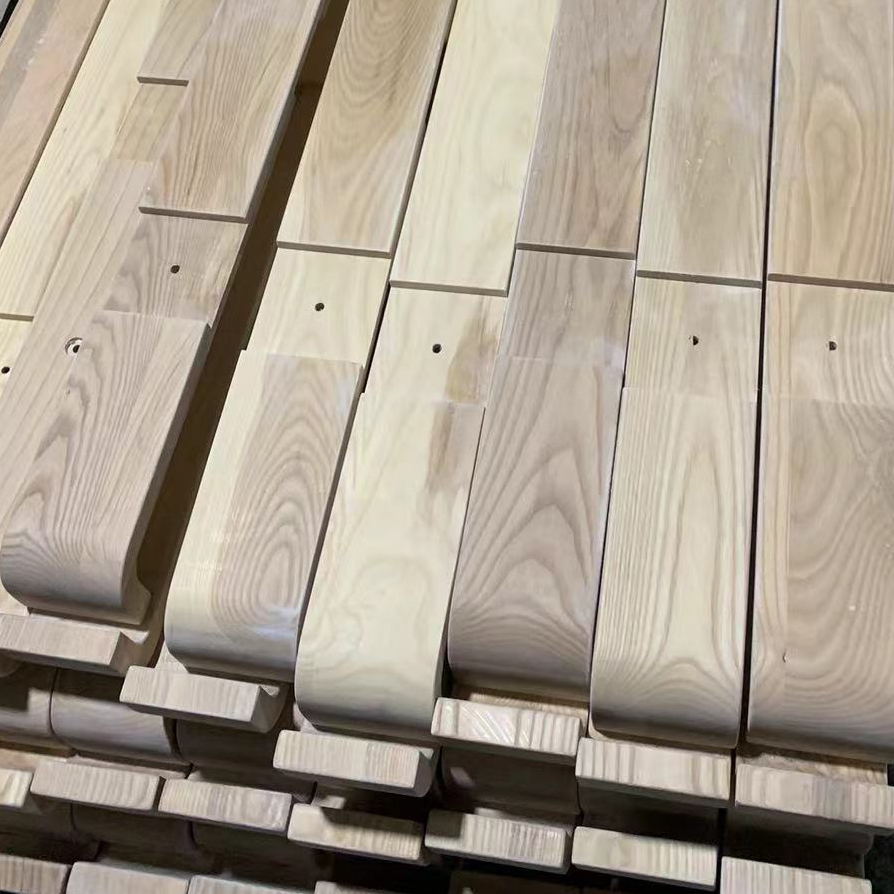
A Minimalist Coffee Table - No Hardware Required
The goal was to design a minimalist coffee table that didn't require any hardware to assemble.
Joinery
We love seeing joinery come together. (It’s hard to imagine someone who doesn’t.) We wanted a minimalist coffee table that didn’t need any hardware or glue, but despite the name, it wasn't complicated to figure out how the pieces come together. Rather than having a top and four legs that fit together in a complex (but admittedly amazing) way, the concept was to take one joint and scale it up to the size of a table.
There was a practical reason for wanting to design a piece of furniture without complicated assembly: shipping and delivery. Some furniture arrives in large crates, already assembled, but we wanted to avoid shipping a lot of air.
Shipping furniture in pieces is efficient, but we don’t love anxiety-inducing instructions and making sure every bolt is accounted for. (It’s hard to imagine someone who does.) You can either take a chunk out of your Saturday to put it together, or the delivery team puts it together for you. Either way, the simpler we could make assembly, the better.
Simple is Hard
Although the concept was simple, production was an example where simple is hard. Each inside corner has to be carefully cleaned up and squared off by hand since a router uses a drill bit with a slight radius. Each piece also had to be precise to fit together nicely, without having to force it or having sloppy gaps. The quality and thickness of the material, direction of the grain, finish, and proportions were all details that had to be tested and refined for the final product to be successful.
Check out the final product here.

